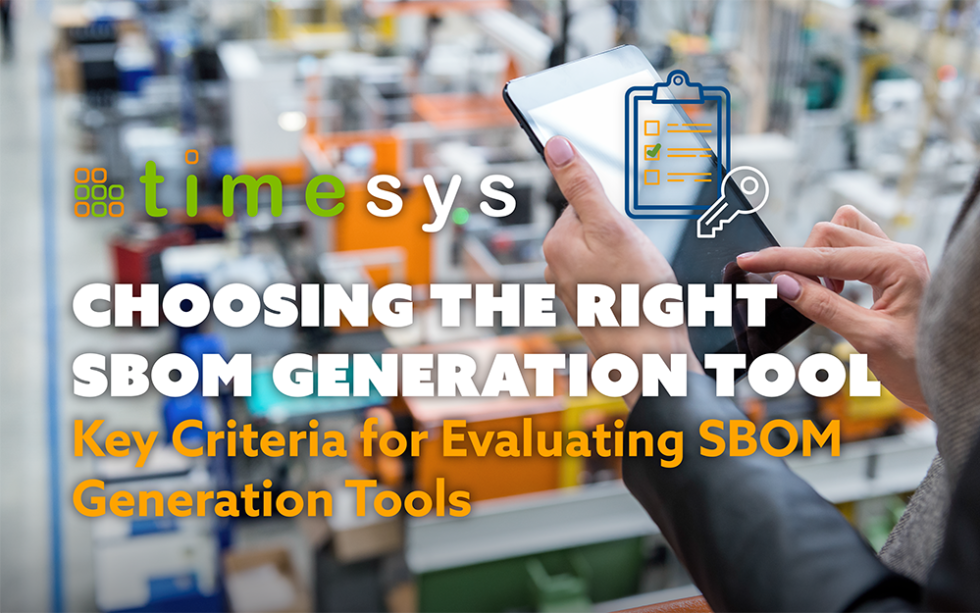As you know, choosing the right SBOM generation tool plays a pivotal role in open source security, compliance, and project efficiency. The consequences of using an unsuitable tool can be severe, from incomplete or inaccurate information to missed security updates and legal challenges. But what are the key criteria that can help guide your decision in selecting the ideal SBOM generation tool for your needs?
What Key Criteria Should I Consider When Evaluating SBOM Generation Tools?
When evaluating SBOM generation tools, you’ll want to consider several key criteria to ensure you make an informed choice tailored to your project’s requirements. Let’s delve into the essential factors to consider.
Accuracy
The primary purpose of an SBOM is to provide an accurate inventory of your project’s open source components, including their versions and dependencies and even details about part origins and vendors. A reliable SBOM generation tool should consistently deliver precise and up-to-date information about your software’s components.
Data Collected
In addition to basic component information, a robust SBOM should contain the Common Platform Enumerations (CPE) or package URLs (PURL) of vulnerabilities that are affecting any included open source software, information on licensing, and any other relevant details. The tool you choose should also be capable of collecting comprehensive data to support your security and compliance efforts, such as meeting NTIA’s “minimum elements” for SBOM requirement.
SBOM Format
Different projects and organizations may have specific format requirements for their SBOMs. Ensure that the tool you choose can generate SBOMs in the format that aligns with your project’s needs (such as SPDX and CycloneDX), making integration with your existing tools and processes seamless.
Ease of Use
A user-friendly interface and a straightforward setup process are invaluable. An SBOM generation tool should not be a source of frustration but a tool that enhances your productivity and efficiency. Look for tools that are easy to configure, maintain, and use.
Versatility
Consider the flexibility and versatility of the tool. Can it be used for multiple ecosystems? Ecosystems include programming languages, operating systems, build systems, package managers, containers, and more. Does it cater to the diverse needs of your projects, whether they are large-scale applications or smaller, specialized software? A versatile tool should adapt to your project’s size and complexity.
Integration Capabilities
Successful integration with your existing development and security tools is paramount. Your chosen SBOM generation tool should seamlessly fit into your workflow, making it easier to manage open source components and vulnerabilities.
Support and Documentation
Assess the level of support and documentation available for the tool. This can be crucial when you encounter challenges or need assistance with the tool’s features and functionality.
How Can I Determine Which Criteria are Most Important for My Specific Project?
It’s important to recognize that how each of these criteria influence your SBOM tool selection may vary depending on your project’s unique needs. To determine which criteria matter most for your specific project, consider the following:
- Ecosystem Compatibility: First and foremost, consider what operating systems your software functions in (Linux, Windows, etc.), the programming languages used (C, Java, Python, JavaScript, etc.), the build systems (Yocto, Make, Gradle, Cmake, etc.), package managers (npm, pip, apt/yum, etc.), and containers (Docker, Podman, Kubernetes, etc.). If the chosen SBOM tool cannot work within your existing ecosystem, then in order to use it, you may have to factor in additional time, resources, and even training for your team.
- Project Size and Complexity: Larger projects may prioritize accuracy and versatility, while smaller projects might focus on ease of use and quick setup.
- Industry and Compliance Requirements: Different industries have varying compliance and regulatory needs. Your project’s sector may influence your criteria selection.
- Resource Constraints: Assess your available resources, including time, personnel, and budget, as this can impact the practicality of implementing certain tools.
What are the Top SBOM Generation Tools? How Do They Compare?
At Timesys, we know how overwhelming it can feel and time-consuming it can be to conduct the research in order to choose the best SBOM tool. To help you with this process, we’ve evaluated how different SBOM tools stack up against the key criteria we’ve discussed, providing you with a practical guide to making the right choice for your open source security needs. We also know that one-size shoe, or one-size SBOM tool, may not fit everyone’s needs and incorporated this into our analysis.
As more tools become available, we’ll also update our guide with additional analyses. Click here to read “Choosing the Right SBOM Tool: A Comparison of Top SBOM Generation Tools,” explore the strengths and weaknesses of various SBOM generation tools, and identify which SBOM tool might be best for your needs.

